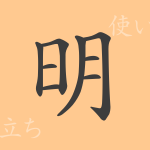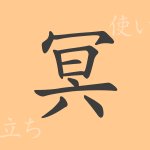In the realm of Japanese written culture, 常用漢字 (Jouyou Kanji) are indispensable elements for daily communication. Among these, the character “迷” (mei) holds profound meanings related to our emotions and actions, and is frequently used in everyday life. This article delves into the origins, modern usage, and the allure of “迷” (mei).
Origins of 迷 (mei)
The kanji “迷” (mei) traces its origins back to ancient China. It has aspects of a pictograph, where “辶” (shinnyou) means “to walk” and “米” (kome) refers to “rice,” symbolizing the act of wandering. Over time, it evolved to represent a state of mental confusion or actions of being lost, leading to its current form.
Meaning and Usage of 迷 (mei)
“迷” (mei) is often used as the verb “迷う” (mayou), expressing uncertainty or confusion about direction, answers, or decisions. Additionally, it appears in nouns such as “迷信” (meishin) meaning “superstition,” and “迷子” (maigo) referring to a “lost child.” Furthermore, it can indicate psychological states like confusion or bewilderment.
Reading, Stroke Count, and Radical of 迷 (mei)
The kanji “迷” (mei) has distinct readings and structure.
- Readings: On’yomi (音読み) is “メイ” (mei), Kun’yomi (訓読み) includes “まよ・う” (mayou) and “まよ・える” (mayoeru)
- Stroke Count: 9 strokes in total
- Radical: 辶 (shinnyou)
Idioms, Proverbs, and Phrases Using 迷 (mei)
There are numerous idioms, proverbs, and phrases in Japanese that include “迷” (mei). For example, “迷信” (meishin) means a baseless belief, “迷子” (maigo) refers to a lost child, and “迷惑” (meiwaku) signifies causing inconvenience or trouble to others. A famous proverb is “迷わず行けよ 行けばわかるさ” (mayowazu ikeyo ikeba wakaru sa), which teaches that if you move forward without hesitation, the path will become clear.
Summary of 迷 (mei)
The kanji “迷” (mei) is a character deeply intertwined with our lives, carrying diverse meanings. It not only expresses the feeling of being lost but also frequently appears in idioms and proverbs, making it an essential element of rich Japanese expression. Understanding the profound meanings and usage of this single character can deepen one’s comprehension of the Japanese language.

























